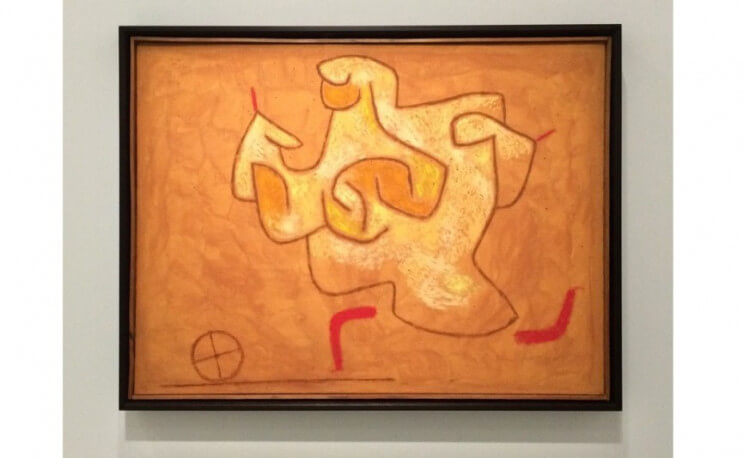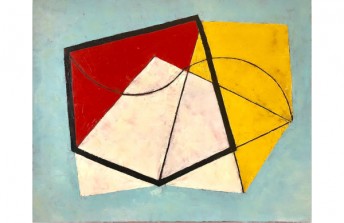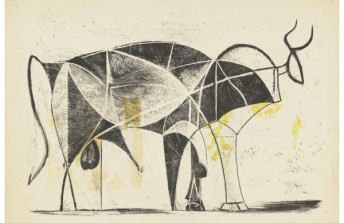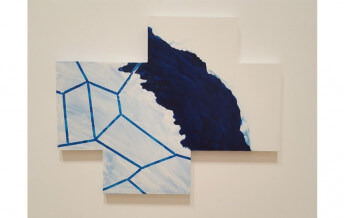Paul Klee Artwork at Centre Pompidou Paris - The Retrospective
Jul 12, 2016
What can you do with a single day? You can dream, you can laugh, you can fall in love. Or perhaps you can do all three with a visit to Irony at Work, a retrospective exhibition of Paul Klee artwork currently on view at the Centre Pompidou in Paris. It was Klee who once said, “A single day is enough to make us a little larger or, another time, a little smaller.” During IdeelArt’s recent day visit to Irony at Work we experienced both. The magnitude and brilliance of Klee’s works humbled us, indeed making us feel a bit smaller, especially when we considered that the roughly 250 works included in the show are but one fourth of one percent of the 10,000+ artworks Klee produced in his lifetime. But the exhibition also enlarged us. The humor and insight evident in so many of Klee’s artworks rejuvenated us, made us smile, made us dream, made us fall in love, made us wonder, and over and over again it made us laugh.
The Humor of Paul Klee’s Artwork
One of the pieces on view at Irony at Work features a news clipping advertising Klee’s 1945-46 exhibition at London’s National Gallery. The clipping shows a reproduction of Klee’s “Fool in Trance,” or as the clipping calls it “Idiot Dwarf in a Trance.” Below the image is a comment attributed to someone named “Epstein,” evidently the British sculptor Jacob Epstein, Klee’s contemporary. The comment reads, “Just like doodling.” Indeed there are many elements of Paul Klee’s aesthetic that might lead a viewer to laugh compare his pictures to childlike doodles. That’s just one of the elements of his style that brought a smile to our faces throughout this exhibition.
Those childlike elements are also evident in the aesthetic of Klee’s sculptures. Klee didn’t make many sculptural works, fewer than 100. For Irony at Work, the curators acquired one of his best, Death in the Mask of a Mummy. This iconic piece at first looks like the remnants of some abandoned sand castle at the beach, or a little kid’s clay project gone horribly wrong. It unavoidably evokes a grin. But as with his so-called doodles, there’s something more going on in this sculpture with Klee’s sense of humor. Klee wasn’t just being silly or primitive. He was being provocative. He was poking ironic fun at his predecessors, his contemporaries, himself, and the very act of making art.
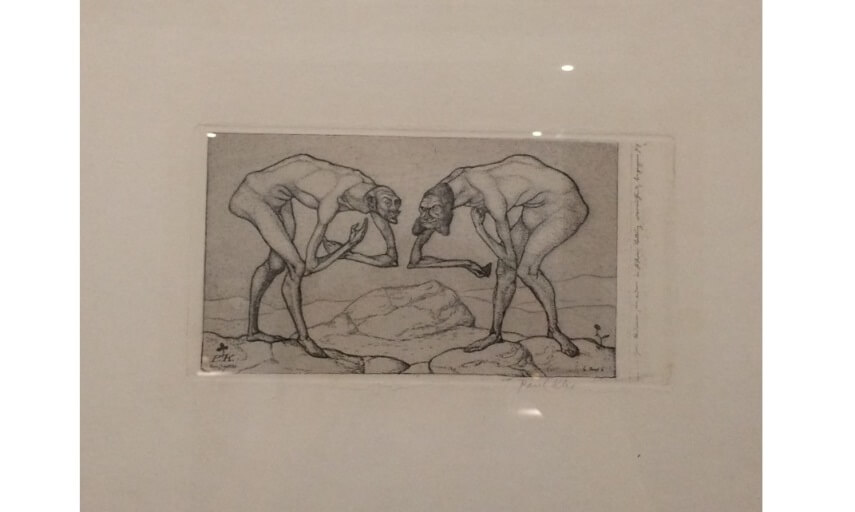
Paul Klee - Two men meet, each believing the other to be of higher rank, 1903
Irony at Play
Rather than simply showing us Paul Klee’s artwork, the Pompidou’s curatorial choices put Klee’s sense of ironic sense of humor at the heart of Irony at Work in an attempt to introduce us to Paul Klee the human being. As evidenced by Klee’s Two Men Meet, Each Believing the Other to be of Higher Rank, from his series of etchings called The Inventions, Klee was an extraordinarily talented illustrator. So why would someone who could so expertly draw make work that seemed like doodles and lumps of mud?
Klee was conflicted. He was talented, well trained and hard working, and he believed that art was capable of transforming the world. But he also felt that the weight of the past. He sensed the burden placed on him as a Modernist artist compared to antiquity’s greatness. Feeling that he and many of his contemporaries took themselves and their ideas far too seriously sometimes, he found balance with humor and irony. Klee was a satirist, often satirizing his friends, his heroes and even himself.
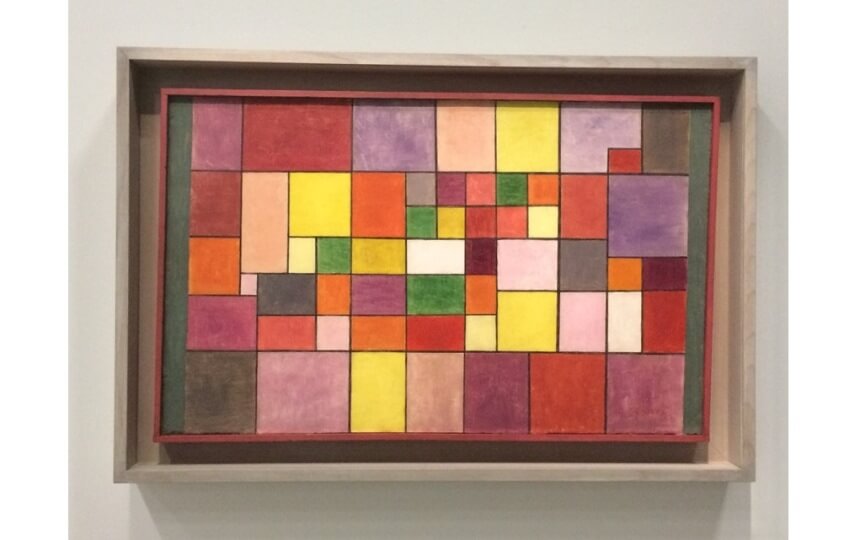
Paul Klee - Harmony of the Northern Flora, 1927
Klee vs. Picasso
Klee especially enjoyed taking shots at other famous artists of his time. His painting Laughing Gothic mimics the Orphist works of Robert Delaunay, whom Klee met the year before painting this piece. The painting’s title makes a satirical jab at the macabre reputation of gothic art, which simultaneously implies that abstract trends like Orphism were being taken a bit too seriously as well. Klee also taught at the Bauhaus and created many works that explored the ideas pursued by his colleagues there. He worked with the grid in paintings like Harmony of the Northern Flora and referenced geometric abstraction with works like Fire at Full Moon.
Klee’s biggest rivalry was reportedly with the artist Pablo Picasso. Some of Klee’s apparent doodles incorporate the forms and shapes of Cubism, seemingly mocking the style’s attempt at depicting four-dimensional space. A prime example is the painting Presentation of the Miracle, painted in 1916. Klee seems to have considered Cubists work to be lackluster. Perhaps by turning Picasso’s imagery into cartoons he was just attempting to lighten the mood a little. Yes, it could be perceived as mockery, or it could also simply have been an attempt to explore their ideas from a different state of mind. Klee also could possibly have been jealous of Picasso’s success, an idea hinted at in Klee’s 1939 painting Fama, which translates into Fame, and which imitates the aesthetic of Picasso’s surrealist works of the 1930s.
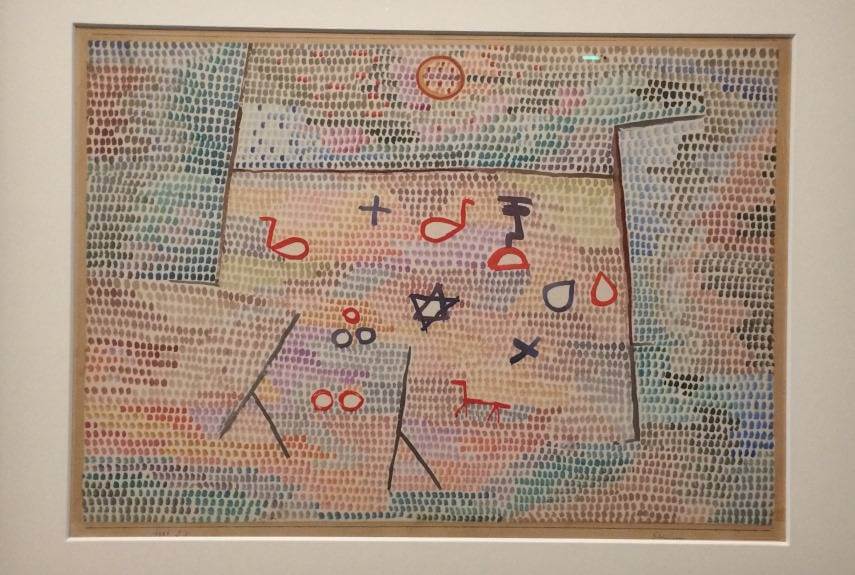
Paul Klee - Toys, 1931
Klee the Human
After World War I, during which he worked as an airplane mechanic, Klee began incorporating machine parts into his images, creating works that appear dehumanizing. For example, his 1922 work Zwitschermaschine, or The Twittering Machine, features a line of grotesque looking birds apparently being powered in their vocalizations by a hand-powered crank. As is pointed out in Irony at Work, he even once prophetically quipped, “When will machines start bearing children?” This seemingly humorous remark reveals that the secret source for Klee’s sense of satire was suffering.
He suffered from the burden of fear that his art may not live up to the needs of his age. He suffered because of the conflict between his need for art to express serious things and his belief that art was not as serious or important as it pretended to be. The success of Irony at Work is that this exhibition delves directly into that conflict. The selection of work portrays Klee’s brilliance right alongside his self-deprecation. It shows him and his oeuvre as something simultaneously larger and smaller than life.
Featured Image: Paul Klee - Fama, 1939
All photos by IdeelArt
